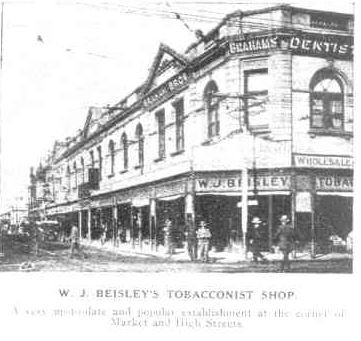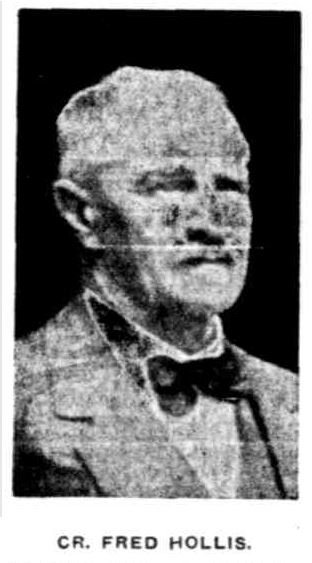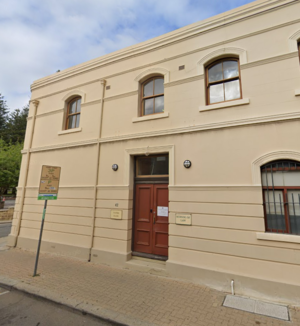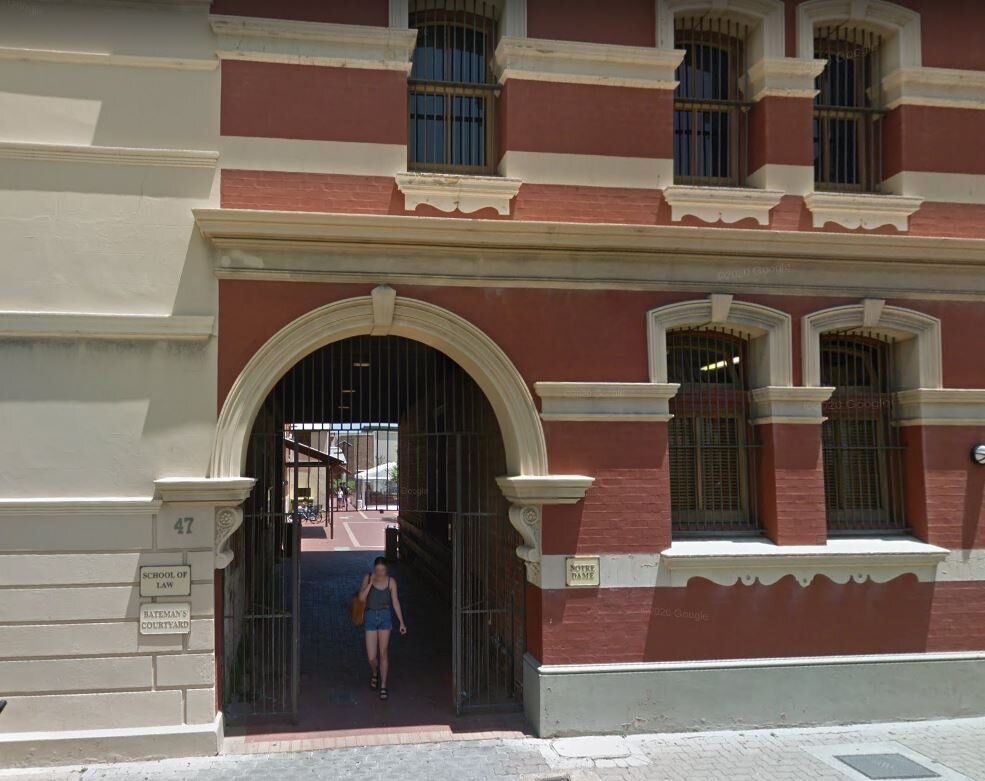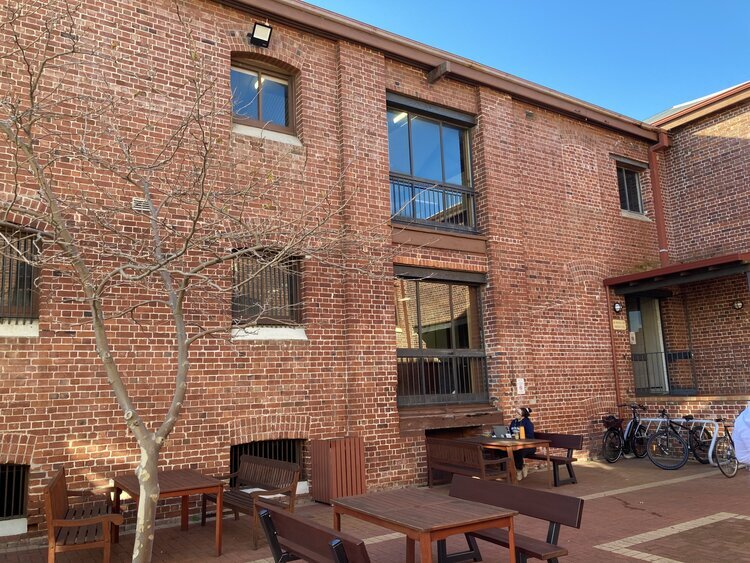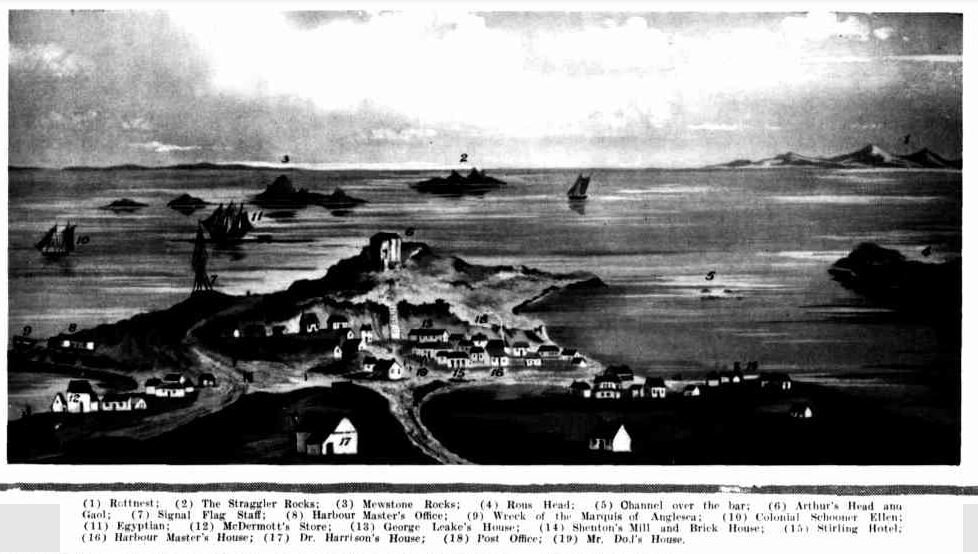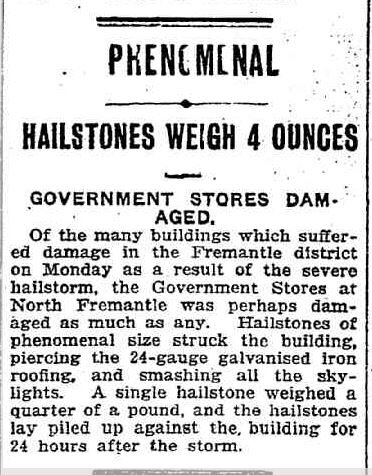41-47 High Street (pre 1938 - 57/65/67 High Street) Union Stores Building, 30-32 Henry Street (pre 1938 - 52/54 Henry Street) Warehouse
The Union Stores is a two storey brick and stone building located on the south east corner of Henry and High Streets, Fremantle. It was designed by architect Herbert Nathaniel Davis and built in 1895 in the Federation Free Classical style. for J & W Bateman.
The decorative detailing on the tuck pointed brick facade is indicative of the original four shops. Stucco Corinthian pilasters, arched and triangular pediments, decorative urns, and an ornate shell pediment at the corner can be seen decorating the facade. The building also has a unique tiled dado of rectangular green and brown glazed tiles.
One of the veterans of the Port Mr W.J Beisley started his hairdressing apprenticeship at the age of 10 with ‘Charlie the Barber’. Three years later in 1887 he hung out his own sign on a shop in Henry-street. This became known as ‘Beisley’s Corner- established where the Union Stores stand. His saloon was reputed to have been the largest and smartest in the West, netting him over £30 weekly on threepenny shaves and sixpenny haircuts. He completed 40 years in the business before he retired in 1927. (reference)
1898 In an instant it was seen that smoke was issuing from Mr. W. J. Beisley's tobacconist’s shop, on the ground floor of the Union Stores building, and with out loss of time the firemen burst into the premises from the back and the front and introduced three streams of water. The fire had started in a store-room at the rear of Mr. Beisley's hairdressing saloon, and the flames were making headway along the galvanised ceiling and on the pine wall which separated the manager's office of the Union Stores from Mr. Beisley's shop. (reference)
In 1902 the original single storey verandah erected over the pavement was replaced with an ornate double-storey lace verandah, comprising posts and brackets of cast-iron.
1914 Union Stores, Fremantle- To those about to marry and to those who, already married, are renewing or replenishing, the Union Stores present an irresistible attracttion. The home of a thousand bargains… (reference)
1929 Mr. W. T. Palmer, who succeeds Mr. H. C. Anderson as general manager of the Union Stores, is a son of Western Australia who gives promise of doing credit to his State. He has been in the hardware line of business most of his working life, and head of that department of his firm for the past five years. Blessed with a good physique he joined up early in the big war and came through unscathed excepting some slight snicks from German bullets. (reference)
1930 In December 30 last, Kenneth Hughes McKenzie, accountant at the Union Stores, told one of the employees that he was going up to Perth to Lysacht's, and might not be back by closing time. He asked the man to close up for him, and left the store. He never returned there, and the next heard of him was that he had been arrested in England, and that Detective-Sergt. Cameron was going to the Old Country to take charge of him and bring him back on a charge that, between March 1 and December 30, 1929, being the servant of Union Stores, Ltd., Fremantle, he had stolen the sum of £3,650/13/5… (reference) Names of other workers in this article include William Cook, Kathleen Western, Winifred May Bentley,
1935 Cr Fed Hollis As a young man he entered the services of the late John Bateman, and later married one of his employer's daughters, who died a few years ago. For nearly thirty years Mr. Hollis managed the business of the Union Stores… (reference)
Signage was originally attached to the building above the line of the verandah advertising the cast-iron ware that the Union Stores supplied. The Union Stores building was in poor condition in 1981/82 at the time the Fremantle City Council purchased the site from the Metropolitan Regional Planning Authority and it was restored, in 1985, with the aid of an America’s Cup grant. Duncan Stephens and Mercer commenced the restoration of the building, altering the internal layout to allow for four retail tenancies on the ground floors and four offices on the upper floor. A single verandah, in keeping the with the original design, was reinstated.
The Union Stores (Ironmongers and Grocers) was a hardware shop in Fremantle, established in 1896 and originally associated with the J.W. Bateman family. The early manager was Hughie Harling, followed by Fred Hollis who took over in about 1910.
Apart from serving the local community, the Union Stores had sales representatives who travelled to country town selling various goods.
In May 1932 the Union stores was bought out by a group of Fremantle residents comprising Richard Rennie, Bill Bailey, Mr Grieve and Mr Piper (of Grieve and Piper customs agents), and Jim Duncan (who became manager).
At that time its name was changed to the Union Stores (W.A.) Limited.
Catering for the building trade it was owned by A. Roby & Co, who manufactured tin trunks and other sheet metal products, gutters, etc. They bought a factory in Hilton Park for manufacturing (Mr. Albert J Smith Manager).
In the 1950s the western end of Fremantle was becoming a backwater as the commercial area of Fremantle moved eastwards. There were plans to widen Henry Street (and High Street) and this would have affected the Union Stores Building. The Union Stores had no suburban branches, and the directors resisted any move to branch out. However, a branch was established in Kalamunda for a short time in the late 1960s.
Eventually the Union Stores was sold to an entrepreneur, Dickie Calthrop. When he died of cancer it was sold to Maclean Bros. and Rigg (another hardware firm in Perth). This company was later taken over by Metro Industries.
Information provided by Richard Edward Rennie (Jr) who worked for the company from 1932 to 1960, becoming manager in the late 1950s. (reference)
OCCUPANTS
Lot 82 owners: 1829 - 1837 Henderson, H E, 1855 - 1857 Beete, J B, 1858 - 1879 Bateman, Walter
No. 41
1899 - 1929 UNION STORES LIMITED grocers & ironmongers
(1901 - 1924 F Hollis, manager), (1925 - 1929 H C Anderson, manager)
1929 - 1930 Stammers, W J, grocers
1931 - 1932 Vacant
1933 - 1949 UNION STORES (WA) LIMITED builders hardware
(1933 - 1938 W T Palmer, manager)
No. 43
1904 - 1929 UNION STORES LIMITED grocers & ironmongers
(1904 - 1924 F Hollis, manager), (1925 - 1929 H C Anderson, manager)
1930 - 1949 UNION STORES (WA) LIMITED builders hardware
(1930 - 1938 W T Palmer, manager)
No. 45 corner shop
1887 - 1899 Beisley, William J, tobacconist, hairdresser,
Bank of Australasia (A. A. Hall, manager)
1901 Berry, W W, confer
1902 - 1908 Mayrhoffer & Co. A. picture frames
1909 - 1929 UNION STORES LIMITED grocers & ironmongers
(1909 - 1924 F Hollis, manager), (1925 - 1929 H C Anderson, manager)
1930 - 1938 Smith & Co Limited Wm, furnishers & drapers
1938 - 1949 UNION STORES (WA) LIMITED builders hardware
No. 47
1901 - 1906 Lovely, Arthur J, chemist
1907 Ritz, Hans, florist
1908 - 1910 Scott, Robert K, pastrycook refreshment rooms- the Vanduara
19011 - 1929 UNION STORES LIMITED grocers & ironmongers
(19011 - 1924 F Hollis, manager), (1925 - 1929 H C Anderson, manager)
1930 - 1938 Smith & Co Limited Wm, furnishers & drapers
1938 - 1940 Flint, A J, auctioneer
1940 - 1942 Ideal Auction Mart, auctioneer
1942 - 1949 Thompson, Samuel, auctioneer
2019 New Edition Bookshop
No. 30 Henry St.
1912 - 1949 Union Stores(W A) Ltd (bulk stores)
No.32 Henry St.
1902
Jeffrey, P P, customs agent
Royal Insurance Co.
1902 - 1904 Bateman, W. A., shipping agent
1902 - 1905 Grieve, J B, general commercial agent
1902 - 1906 Marie & Rundle, indent & commission agents
1905 - 1906 Highham, J J
1906 - 1910 Faulding & Co. F. H. whole-sale druggists
1907 Clark, J, baggage agent
1908 - 1910 Highham, John J, land agent







